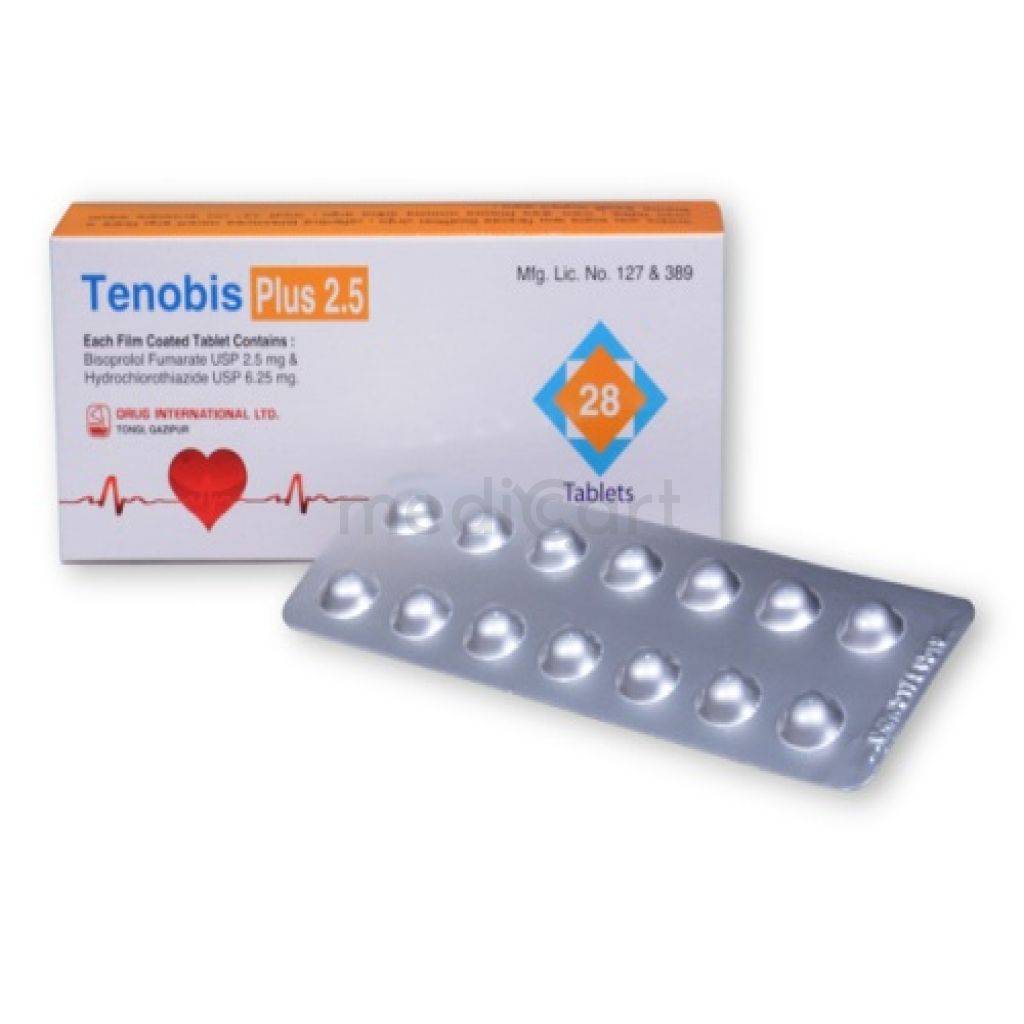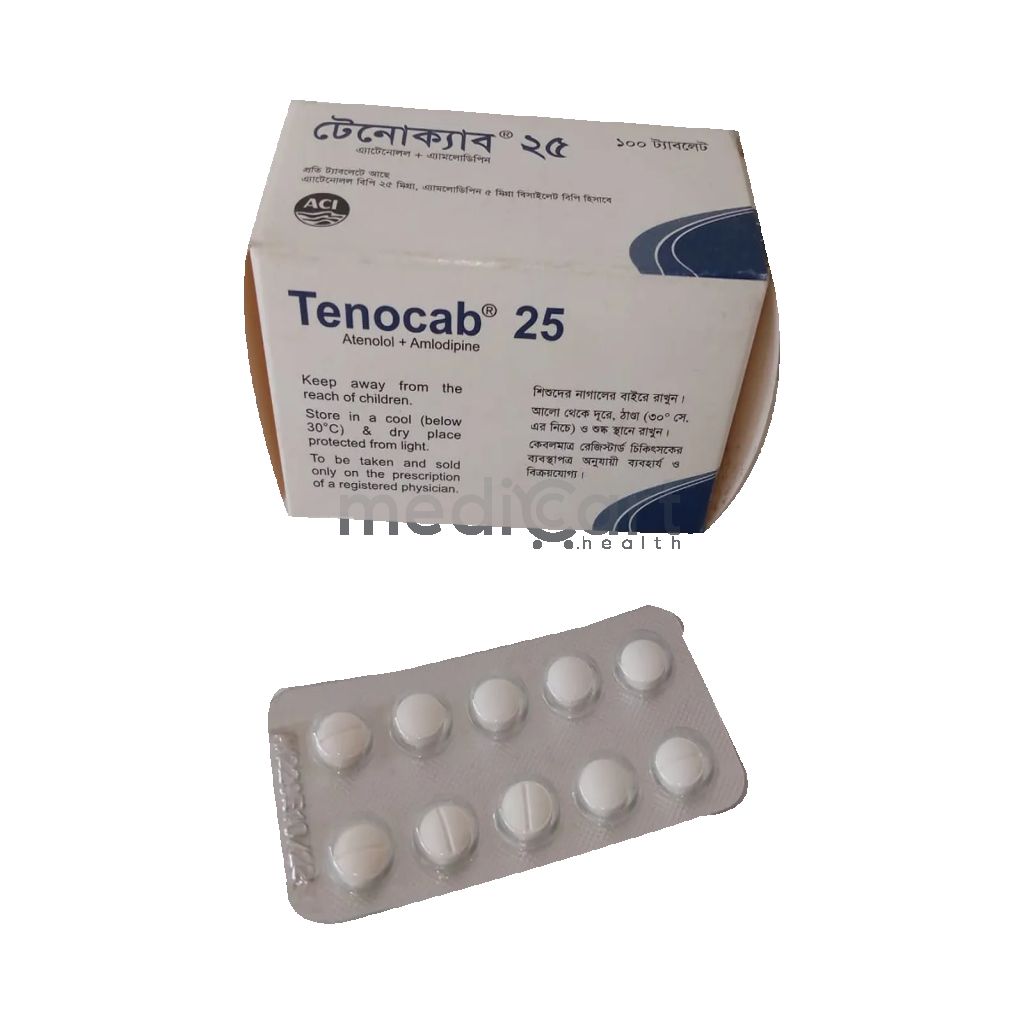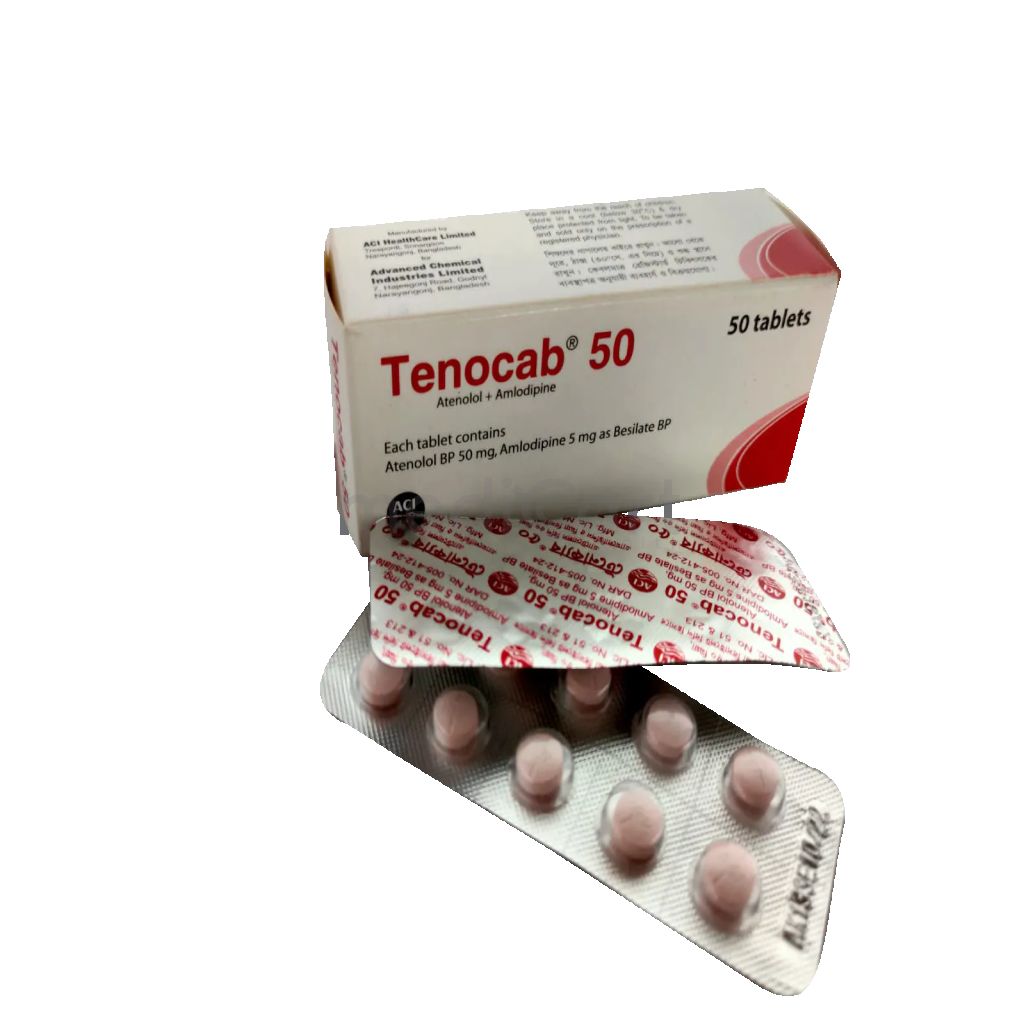

Tenoren PLUS - 50mg
Tablet* Delivery will be done in Dhaka city only.
More Information About - Tenoren PLUS - 50mg
Description
Generic Name
Atenolol + Chlorthalidone
Precaution
Bronchospastic disease, renal or hepatic impairment, elderly. May aggravate peripheral arterial circulatory disorder. Beta-blocker can depress myocardial contractility; continued use in patients without history of cardiac failure may in some cases, lead to cardiac failure. Caution in patients receiving anaesthetic agents that may depress myocardium. In patients with coronary artery disease, abrupt withdrawal may cause angina pectoris exacerbation, MI. Atenolol may mask signs (tachycardia) of hypoglycaemia and thyrotoxicosis. Latent DM may manifest with Chlorthalidone therapy. Chlorthalidone can cause hyperuricaemia and precipitate gout. Monitor renal functions, potassium levels, and signs of fluid and electrolytes imbalance. Discontinue if progressive renal impairment is evident. Not recommended in pregnancy and lactation. Safety and efficacy in paediatric patients have not been established. Lactation: excreted in breast milk, use caution
Indication
Hypertension
Contra Indication
Sinus bradycardia, 2nd or 3rd degree heart block, cardiogenic shock, anuria, hypersentivity to either product or sulphonamide derivatives.
Dose
N/A
Side Effect
Atenolol: Dyspnoea, wheeziness, bradycardia, hypotension, cold extremities, fatigue, dizziness, insomnia, lethargy, confusion, headache, depression, nightmares, nausea, diarrhoea, constipation, impotence, paraesthesia, rash, Raynaud's phenomenon. Chlorthalidone: Orthostatic hypotension, GI disturbances, jaundice, pancreatitis, vertigo, lethargy, paraesthesia, photosensitivity, rash, muscle cramps, hypokalaemia, hyponatraemia, hyperglycaemia, hyperuricaemia or gout, leucopenia, agranulocytosis, aplastic anaemia, thrombocytopenia. Potentially Fatal: Atenolol: Heart failure, 2nd or 3rd degree AV block. Chlorthalidone: Hypersensitivity reaction including toxic epidermal necrolysis.
Pregnancy Category
Name : D
Description
There is positive evidence of human fetal risk based on adverse reaction data from investigational or marketing experience or studies in humans, but potential benefits may warrant use of the drug in pregnant women despite potential risks.Mode of Action
Atenolol is a beta-blocker that acts preferentially on the ?1 adrenergic receptors in the heart. Chlorthalidone is a thiazide-like diuretic that reduces BP possibly by inhibiting sodium reabsorption at the beginning of the distal convulated tubule. Combination of the two drugs results in additive antihypertensive action.
Interaction
Concomitant admin w/ reserpine may increase hypotension and bradycardia. Additive w/ Ca channel blockers, hydralazine, methyldopa. Increased risk of bradycardia and heart block w/ verapamil and diltiazem. May decrease hypotensive effects w/ NSAIDs (e.g. indometacin). Enhanced bradycardic effect w/ disopyramide, amiodarone or digitalis glycosides. May exacerbate rebound HTN upon discontinuance of clonidine treatment.
Pregnancy Category Note
Pregnancy Category: D Lactation: excreted in breast milk, use caution
Adult Dose
Adult: Per tab contains Atenolol (mg)/Chlorthalidone (mg): 50/25 or 100/25. Initially one tab of 50/25 once daily; may increase to one tab of 100/25 based on response.
Child Dose
N/A
Renal Dose
Renal impairment: CrCl (ml/min) 15-35 Max dose of Atenolol component: 50 mg/day <15 Max dose of Atenolol component: 50 mg every other day.
Administration
N/A
Disclaimer
The information provided herein are for informational purposes only and not intended to be a substitute for professional medical advice, diagnosis, or treatment. Please note that this information should not be treated as a replacement for physical medical consultation or advice. Great effort has been placed to provide accurate and comprehensive data. However, Medicart along with its authors and editors make no representations or warranties and specifically disclaim all liability for any medical information provided on the site. The absence of any information and/or warning to any drug shall not be considered and assumed as an implied assurance of the Company.










